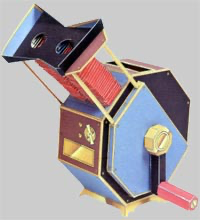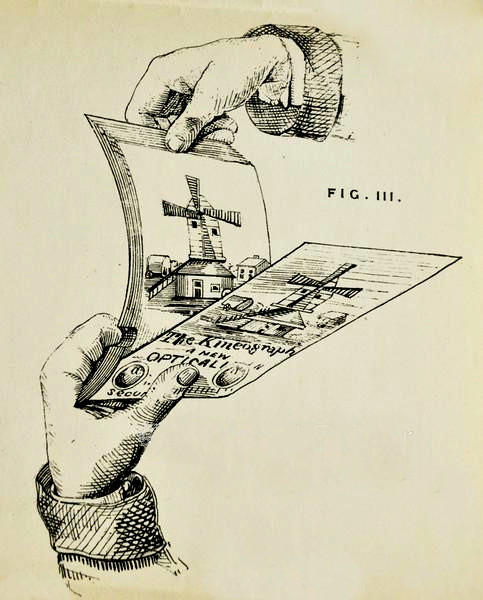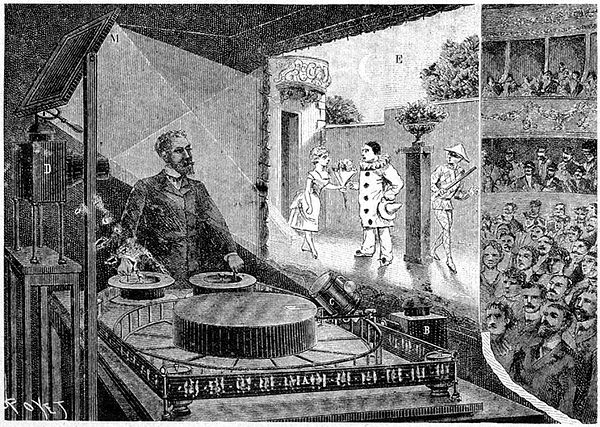History of Animation: From Shadow Play to CGI (Video Breakdown)
Animation is one of the closest things to real magic. How?
By taking a series of sequential images, our brain is able to predict the movement between them, and showing the images fast enough – it creates the perception of motion.
Or in other words: magic.
But why?
- Is it a predatory instinct scanning the immediate environment for danger?
- Or is it pattern recognition happening without our conscious control?
The evolution of animation is filled with attempts to answer these questions. And as we can see by its growing popularity - artists have been able to successfully answer them.
It starts with the etymology of the word animation
In latin,
- ‘anima’ means “breath, air, soul, life”
- Animāre means “to breathe into, quicken, enliven”
- Animātiō means “the act/process of giving life, animation”
And eventually, old French,
- Animation means (action of imparting life, liveliness; by 1912, used to describe cartoons)
You can see that animation is truly about breathing life/soul through movement. Intuitively we know this to be true. A painting on the wall doesn’t feel quite the same as a moving character.
Not only does movement convey additional information, but it completely fascinates the human mind.
A 25 centuries mini-sprint – the history of animation (in animation)
Here’s a video we, the Rocketwheel video studio, made summarizing the key points in the history of animation. If you prefer to watch, just grab a coffee and hit play.
Frequently Asked Questions on History of Animation
To save you time, here are some quick answers which you may be searching for:
- What’s the first animated film? It’s called ‘Humourous Phases of Funny Faces’ – more on it below.
- What’s the persistence of vision in animation? Psychological phenomenon where objects linger and continue in our vision.
- How did shadow puppetry influence modern cartoons? Early animators grew up and were inspired by the forms of art that came before them.
- Why did CGI overtake 2-D animation? Simple answer: audiences voted with their wallets.
We’ll go over these questions and more, but for now lets start at the beginning.
Neurologically we just can’t look away from moving pictures
Animation hijacks our minds. Moving pictures grab our attention. I’m not talking about storytelling here, or even the meaning we perceive behind moving pictures.
Just the material movement. Our eyes are constantly scanning environments for food, safety and danger. So any sudden or colourful movement immediately grabs our attention.
Making us unable to look away. There’s something very basic and primal about our desire to consume content. In public transport our eyes will naturally drift towards moving pictures on other peoples screens. Even if we ourselves are not curious.
Before modern day animation, we made bowls designed to be spun
To count the first attempts of animation, we need to loosen our modern day standards. The first experiments were with physical movement.
- A 5,000-year-old pottery bowl from Iran showing a goat leaping to nibble leaves is possibly the oldest animation artefact.
- Hieroglyphs are sequential, and some Egyptologists suggested that walking by the light of a lantern has a proto-animated effect.
As you can see in both these examples it’s either the human or the object that have to move. Which isn’t how we consume content today. Imagine having to walk 40 miles just to find out the end of a movie.
Shadowplay: the most popular theatre type that you never heard of unless you’re from Indonesia
Shadow play theatre is an early form of animation. Which quickly became the dominant form of storytelling, and has stuck around for over 2000 years.
In the early days it was reserved for courts and kings. Overtime becoming more and more complex. With music composed for scenes, character voices and morals imparted through the stories.
A recurring theme in the history of animation is: popularity.
Today we may think it’s funny playing with puppet shadows for theatre. But this medium allowed artists to create characters, stories and performances which weren’t available at the time. There just wasn’t ‘netflix and chill’.
Even UNESCO recognizes Indonesian shadowplay theatre known as ‘Wayang Puppet’ as an Intangible Heritage of Humanity.
https://www.youtube.com/watch?v=pfydro4X2t0
One of the earliest traditions of performance theatre – which influences so much of what we see today. Over 2000 years is a solid track record. Who knows if ‘Game of Thrones’ or ‘Breaking Bad’ can hold up that long.
Next, another invention you have never heard of as well.
The ‘magic lantern’, an invention you won’t be particularly impressed by
Before the cinema there was ‘the magic lantern’. For almost 250 years it was the most popular form of visual storytelling.
Yet, when it was released in 1659, it’s hard to imagine how incredible it was.
This was a time you yelled “gardy-loo” before dumping your chamber pot in the streets below.
40 hours a week is too much? You’d be fired! People were working 80 and for barely enough to survive.
This is the society in which the magic lantern makes its debut.
https://www.youtube.com/watch?v=qmjESb1xC08
And it’s a hit. People love it. Even though at the beginning it’s just illuminated static images on glass panes. Eventually with more moving pieces and parts to create fuller effects.
Eventually losing out to cinema, this form of animation was popular for centuries. Even as other novelties came out.
The physical spinning era, get ready for scopic scopes and tropes
In the 1830s there was an explosion of inventors using physical movement to create illusions.
This came from an anonymous letter on wheel spoke blur in 1820. Which four years later was read to the Royal Society and so the term ‘persistence of vision’ was seeded.
Why is this important? Well, this was Victorian society; it was about being respectable, informed and using one's time wisely.
So smart marketers started to sell their gimmicks as ‘philosophical experiments’. Among these the thaumatrope
https://www.youtube.com/watch?v=cv7mKTjHnpY
Then there was the phenakistoscope, which has the feeling captured in some early cinema. A bit absurdist, capturing a kind of caricature of life.
https://www.youtube.com/watch?v=ofqs7vwg3Wc
Believe it or not, flipbooks were a really really big deal when they came out
Back in the day there were coin operator mutoscopes. Which were effectively flipbooks with a handle and kind of goggles. You paid to get a visual experience.

You see paper wasn’t always a low-cost cheap product. Back in the day it would have been a sin to waste paper for silly entertainment like flipbooks.
So it wasn’t really something artists considered until 1868 when James Barnes Linett patents the “kineograph” which is a fancy 18th century way of saying flipbook.

Soon the coin operated versions were spreading everywhere. Even corporations were jumping on it, realizing the marketing potential of flip books was enormous.
And the paper prices, oh the paper prices – they just kept on dropping! And as steam presses and chromolithography improved production prints just kept looking better and better.
More colour. More crisp. More definition.
In fact, if animation and moving pictures never came out – we’d probably all be looking at flipbooks right now instead of Instagram reels.
But even flipbooks couldn’t compete with the ‘praxinoscope’
Charles-Émile Reynaud, the French man credited with inventing the praxinoscope, is kind of a big deal. Why?
From 1892 to 1900 Renayd showed his live show cartoons to over half a million viewers. And it was all thanks to this:

A new contraption which allowed the image to be projected more clearly – which won the minds and hearts of audiences until all good things came to an end.
How? It was those darned Lumiere brothers, they had created a motion picture system and it started to eclipse praxinoscopes in popularity.
The age of animation begins, a goliath awakens
It happens fast. Animation exploded as a medium.
- 1906 – first animated standard film, audiences fall in love with ‘Humorous Phases of Funny Faces’
- 1908 – traditional hand drawn animation starts with ‘Fantasmagorie’, at the same time advertising starts using animation techniques
- 1914 – classic ‘Gerie the Dinosaur’ released, showing animated character and stage performer at same time, amazes crowds
- 1917 – First animated feature ‘El Apostol’ made in Argentina, same year Japanese animation begins, start of global craze
- 1919 – ‘Felix the Cat’ becomes first animated star, merchandise selling character
- 1928 – ‘Steamboat Willie’ adds sound to animation. Audiences lose their minds, turning Mickey into a superstar
- 1932 – by now, full-color animations with sound weren’t just popular, but technologically kept on improving
- 1937 – ‘Snow White’ kicks off golden age of animation as it earns rave reviews from film industry insiders and critics
By this point 2D cel animation kept on growing. It was becoming morning cartoons. It was turning into corporate branded characters. The audience attention it could hold was becoming a more and more desired commodity.
This is what ushered in the Golden Age of Animation.
The Golden Age of Animation
In the 1940’s ‘Princess Iron Fan’ by the Wan Brothers was released. Made during WW2 under difficult conditions – it became a huge hit. And in 1945 a Japanese animator Mitsuyo Seo releases ‘Momataro: Sacred Sailors.
A propaganda film but also credited with being Japan’s first feature-length animated film. So animation wasn’t only exploding in America.
But animation was making leaps and bounds. By 1950, the first animated series hit US airwaves. And by 1960, ‘Flintstones’ became the first animated series in a prime-time TV slot.
Hugely popular. Turning into one of the longest running animation shows even today.
And then through the 1970s-1980s, a shift happened – 2D animation techniques like: clay, hand-drawn traditions, started to lose ground to 3D.
While America was figuring out it’s new style-identity, in Japan high-quality animated films like ‘Akira’ were on the rise during the 1980’s. The signs of a dormant giant awakening from a slumber.
Then it started: 2D vs 3D animation, who will win?
It was Disney that first used 15 minutes of CGI in the 1982 film ‘Tron’. Which started a trend towards digital animation. It wasn’t immediate, but there was instantly a group of creatives who set out exploring what could be done with computers.
And spoiler: 40 years later, the dominant style is 3D not 2D animation. So what happened?
CGI started to get used more and more. The visual effect it brought was well – more dynamic, deeper, and faster to produce.
Then there were Pixar movies like ‘Toy Story’ which redefined what animation could do. How much audiences could invest into CGI characters. With this the barriers were becoming broken.
And by the numbers alone it was obvious: audiences were voting for 3D.
Future of CGI animation? More CGI animation.
One thing is clear: with AI and computing costs going down we won’t see less CGI. Actually we’ll see more, and it will become harder to tell apart from the ‘real world’.
We see that games, movies and media are naturally moving towards more complex forms of 3D. As technology continues to evolve more will be possible.
Is the future virtual worlds in VR like Mark Zuck wants? Or is it just better movies with special effects that go harder?
Today the emergence of deep fakes has spooked people. As AI and 3D technology continue to improve there’s really no stopping trends like this.
There you have it, a history of animation: from drawings on cave walls and sides of pottery to deep fakes of presidents fighting.
https://www.youtube.com/watch?v=2wqWnoMg1dU
Source: Zelensky and Trump fighting.
People are misinformed by pictures online, imagine what happens when every parody video looks real – what becomes truth?
Why did we write about the animation timeline?
We’re a small animation studio that’s been around for 13 years. We love animation, we love telling stories, and sharing the (little bit) we know about the subject.
If you want to chat animation or have a project, reach out to us.







